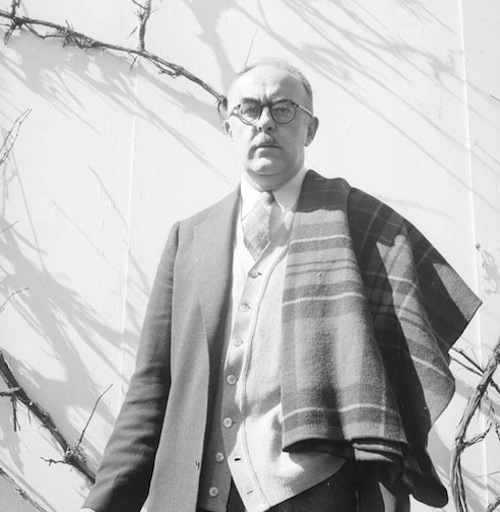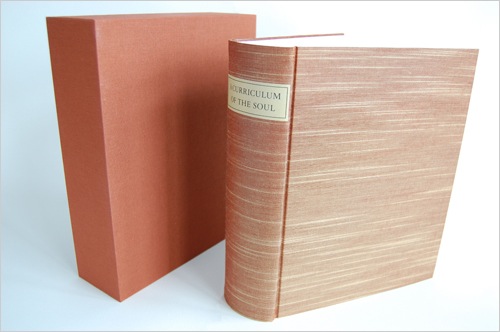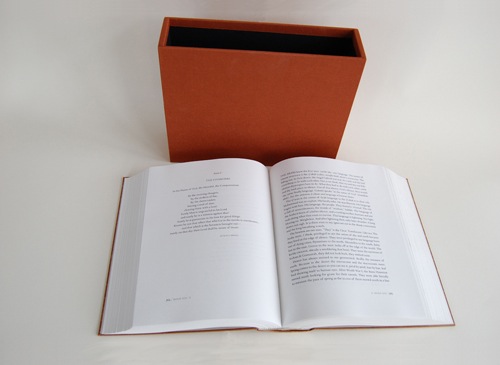The Community of THE CURRICULUM OF THE SOUL
BY Joanne Kyger

In San Francisco in 1957 when I was first "coming of age" in poetry, Joe Dunn gave me a copy of Poetry New York #3, which contained Charles Olson's "Projective Verse." I had questions then about how to structure my words on the page. From then on, "Projective Verse" became my constant meditative text. I found comfort in the dense muscular conversational rhetoric and became aware that it was possible to chart the actual breathing of a human voice on the page.
Charles Olson also gave me a poetics which contained history as memory of time and place. Growing up in the U.S. with Western history being taught as an extension of the Greek and Roman Empire—learning Latin, and Greek and Roman mythology as a source of contemporary culture, I welcomed Olson's expanded sense of world history. Especially that of America which he understood did not stop at the border of the U.S. It included the many nation states of Mexico, especially the Mayan, (which as an informal archaeologist he personally experienced) which are often, unaccountably, not included in our "Western" cultural inheritance—even from a post 1519 invasion point of view.
In September of 1963 Olson was appointed Visiting Professor of English at the State University of New York at Buffalo. He returned again in 1964. A community of students and poets, writers and thinkers, gathered around him. Harvey Brown, from Cleveland, Ohio, took over the editorship and funding of the Niagara Frontier Review, which published many writers associated with The New American Poetry—Charles Olson, Ed Dorn, John Wieners, Robert Duncan, Gary Snyder, Amiri Baraka, Diane diPrima, Al Glover, Fred Wah, Don Cherry, Herbert Huncke, and two new Cantos by Ezra Pound.
Harvey Brown, who came from a wealthy, socially prominent Cleveland family, chose to direct his inheritance towards "the subjugation of money to spirit." He preferred the company of jazz musicians he met in Cleveland and New York, and started a recording company to further the work of Don Cherry, Ornette Coleman, and Clifford Jordan. Some years later, his fascicle for the Curriculum of the Soul series JAZZ
PLAYING describes a young man suffering the loss of his father "hearing the most incredible sounds—I came alive… The agony of what I had assumed to be a private experience of loss was articulated publicly." All pouring out from the speakers over Lindsy's Sky Bar on Euclid Avenue in Cleveland.
Besides funding the Niagara Frontier Review, Harvey Brown started Frontier Press, with the encouragement of Charles Olson. The 25 books and pamphlets he published until 1971, were at the center of Olson's teaching, but currently out of print. It was a wide ranging list, including books like The Paths of the Mound Building Indians, The New Empire by Brooks Adams, Alexander Beckman's The Memoirs of a Prison Anarchist, and also books by poets from William Carlos Williams, HD, to Ed Dorn, Ed Sanders, Michael McClure, Albert Glover, and Robert Kelly. Harvey Brown was also responsible for providing a yearly stipend for Charles Olson during the last years of his life.
Continuing the direction of Frontier Press, and again using the impetus of Olson's ideas, Fred Wah, Al Glover, Jack Clarke, and George Butterick, decided to produce writing a little more quickly and published six issues of The Magazine of Further Studies, published by what they called The Institute of Further Studies. In 1968, issue #5 of The Magazine of Further Studies published Olson's "A Plan for the Curriculum of the Soul." It was a distinctive map with 223 names, subjects, ideas, topics, strewed across the page at all angles.
After Charles Olson died in January 1970, his colleague, Jack Clarke, made a selection of 28 of these words, assigning them to members of the Olson Community. The idea was to write a short chapbook or "fascicle" of 25-50 pages on the subject. Some of the assignments were finished quickly and published from 1972-1974. Other topics were reassigned. The final fascicle was published in 2002.
In 2010, on the 100th anniversary of Olson's birth, all these fascicles were published in one large volume by Albert Glover who had taken over the project when Jack Clarke died in 1992. The book was conceived of as a single text, all those voices as "one voice," an "epic," so the authors are not listed until the final page, in small print, as follows:
0. Charles Olson, Pleistocene Man
1. Albert Glover, The Mushroom
2. Duncan McNaughton, Dream
3. John Wierners, Woman
4. Michael Boughn, one's own Mind
5. Lisa Jarnot, one's own Language
6. Fred Wah, Earth
7. John Clarke, Blake
8. Robert Duncan, Dante
9. Alice Notley, Homer's Art
l0. Robin Blaser, Bach's Believe
11. Robert Dalke, trans., Novalis Subjects
12. George F. Butterick, The Norse
13. Edward Kissam, The Arabs
14. Edward Billowitz, American Indians
15. Harvey Brown, Jazz Playing
16. Lewis MacAdams, Dance
17. Ed Sanders, Egyptian Hieroglyphs
18. Michael Bylebyl, Ismaeli Muslinism
19. David Tirrell, Alchemy
20. Danny Zimmerman, Perspective
21. Drummond Hadley, Vision
22. James Koller, Messages
23. Gerrit Lansing, Analystic Psychology
24. Joanne Kyger, Phenomenological
25. John Thorpe, Matter
26. Robert Grenier, Attention
27. Anselm Hollow, Sensation
28. Michael McClure, Organism


Albert Glover says about the volume "I believe that the text does cohere, has a 'beginning middle and an end' is serious, complete, and of a certain magnitude and will prove so to some future reader who doesn't know anything about the authors."
"We are all one voice of various sounds" said Olson. All the books were composed as individually and as variously as the different poets—made up of poems, journals, dreams, translations letters, essays.
The books, in a limited edition of 50 copies were given to the authors, with a few being offered for sale, now on Amazon. An electronic version of the book is also being planned for the future. Individual copies of some of the fascicles are still available from Albert Glover. The Institute of Further Studies. 26 Fairlane Drive, Caton, NY 13617, [email protected]
In 1985 I was assigned topic #26 PHENOMENOLOGICAL, originally given to Robert Hogg. I used my journal from a trip to the Yucatan for much of the content of the fascicle. I carried along Olson's Mayan Letters written during his 6 month stay in Campeche in 1951. It acted as a kind of counterweight from three decades earlier for what was happening at the moment. Information was just being discovered about the history of the mysterious Mayan and their deserted temples. "I guess these people had a very ancient way of NOT IMPROVING on nature… and with an attention that did not include 'improvement'". A "phenomenological realism which strums the strings of time without touching them," says Olson.
This curriculum of study is as far reaching as boundaries want to go. And as particular or general as any voice wants to be—and all together create an organism that projects the activity of the "soul," a community of minds.
Associated with the poets of the San Francisco Renaissance, poet Joanne Kyger studied philosophy and...
Read Full Biography

